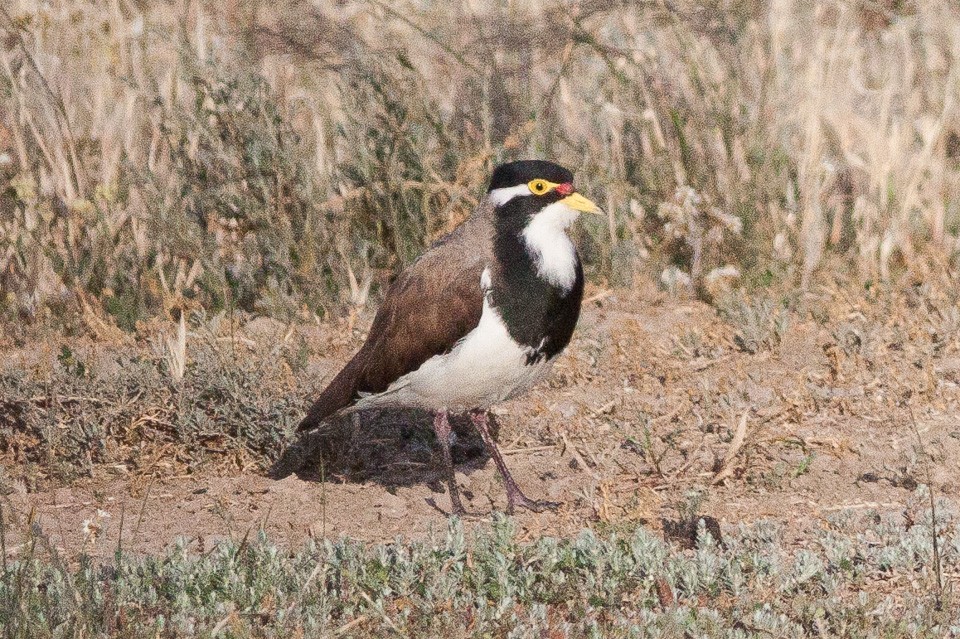Banded Lapwing
A species of Lapwings Scientific name : Vanellus tricolor Genus : Lapwings
Banded Lapwing, A species of Lapwings
Botanical name: Vanellus tricolor
Genus: Lapwings
Content
Description General Info
Description
The banded lapwing is a medium-sized shorebird with short dark purplish legs and a dull red tibia. They range from 25 cm to 29 cm in length and weigh on average 190 grams. They have an upright stance and a slow walk, breaking into a faster trot when alarmed. The bill is a pale yellow with a black tip and a small red wattle lies at the base. The red wattle and wing spurs are more prominent in males than females. Banded lapwings are characterised by a black cap, a white throat and underparts, white eye stripes and a black breast band extending up each side of its neck to its face. The irises are bright yellow. They fly quick, clipped wing beats, giving them the name 'lapwing'. The young range from 22 cm to 25.5 cm in length and weigh between 124-133 grams. Juvenile plumage is similar to that of the adults, however the crown, nape, sides of neck and breast is mottled dark brown and the feathers of the upper parts are tan. 
Size
29 cm
Nest Placement
Ground
Feeding Habits
Banded Lapwing forages day and night in short-grass areas, consuming seeds, insects (worms, ants, termites, beetles, cockroaches, grasshoppers, crickets, caterpillars), displaying versatile dietary habits with no unique preferences highlighted.
Habitat
Banded Lapwing are indigenous to open grasslands and semi-arid inland areas, inhabiting environments like grazed paddocks, agricultural lands, and sparsely vegetated zones. They favor open savannas and saltbush plains, avoiding dense scrublands. Despite being adaptable to various habitats and capable of thriving away from water, they are infrequently found in wetlands. Seasonal environmental changes influence their nomadic movements beyond the breeding period.
Dite type
Insectivorous
General Info
Feeding Habits
Bird food type
Distribution Area
Banded lapwings are endemic to Australia and found throughout the mainland and Tasmania. They are rarely found in northern Australia and are uncommon in most coastal areas and they are not dependent on wetlands and may live far away from water. Banded lapwings prefer open plains and short grassland areas such as heavily grazed paddocks, agricultural lands and recently germinated cereal crops most commonly found inland and pastures of coastal and inland regions. It avoids Acacia scrub areas, except where these have become more open due to overgrazing. The species has probably benefited from the clearing of forest and woodlands in southern Australia for agriculture. Outside the breeding season, banded lapwings gather in small flocks and are nomadic. Its movements from one area to another is influenced by seasonal conditions. Records from the Atlas of Victorian Birds state the banded lapwing is most frequently reported in Victoria during Spring and Winter suggesting that in Victoria they breed when rainfall is highest. 
Species Status
Conservation of banded lapwings will be dependent on appropriate management of farm and pastoral lands as it exploits a variety of open habitats and agricultural land however, there are no immediate or serious threats to its future survival. 
